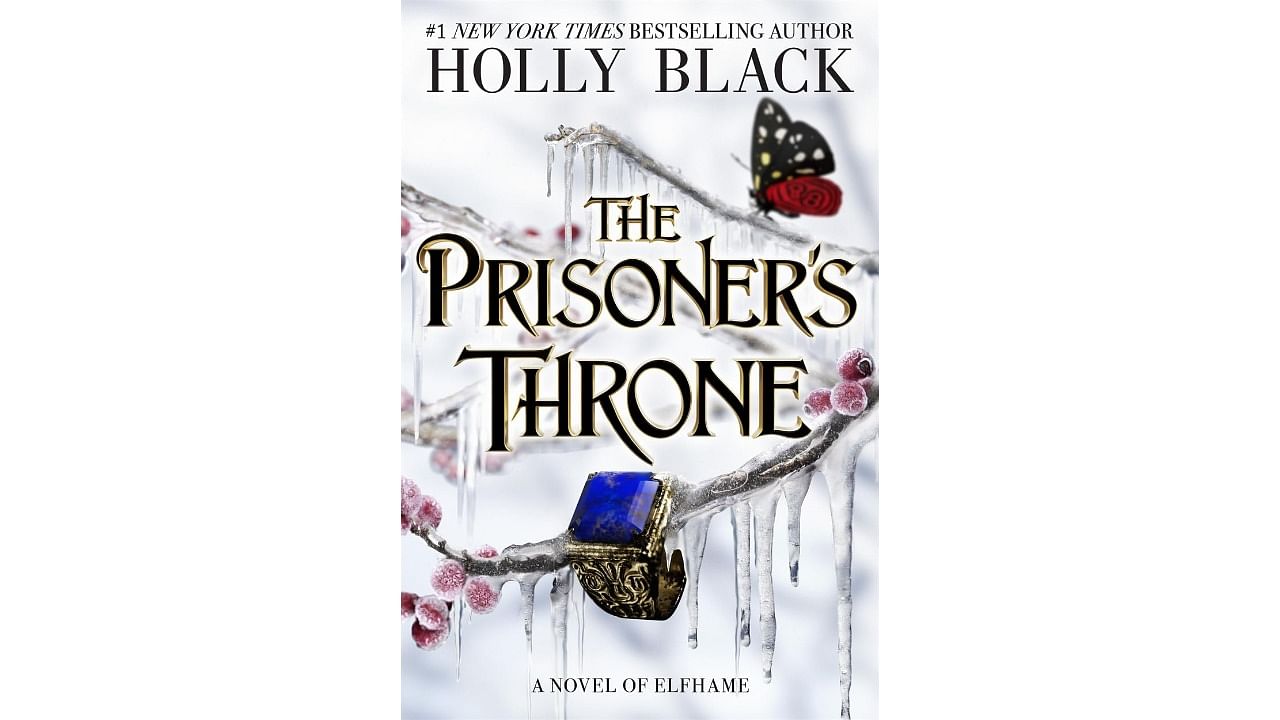
The Prisoner's Throne
Holly Black has triumphantly returned to the captivating world of Elfhame with The Prisoner’s Throne, the enthralling finale to The Stolen Heir duology. This follow-up spin-off delves deeper into the lives of characters readers were first introduced to in the author’s bestselling The Folk of the Air series.
Oak Greenbriar, Jude Duarte’s younger brother from the original series, and Suren (affectionately known as Wren), the exiled heir to the Court of Teeth, continue their dance around love and power as Black masterfully reimagines these characters, stripping away their superficial facades and revealing complex individuals wrestling with morality and ambition. The result is a far darker tale than its whimsical packaging might suggest. In the place of playful barbs and youthful defiance, The Prisoner’s Throne is wrought with a heart-pounding struggle for power, rife with betrayals and fraught with difficult choices in the name of love.
Secrets and burdens
Picking up right where The Stolen Heir left off, The Prisoner’s Throne starts in the icy clutches of the North, where Prince Oak languishes in a frozen prison, the price for his betrayal of Wren, his former companion and the newly crowned queen. Despite their fractured bond, Oak yearns to save Wren from the emptiness of her own heart. Meanwhile, Jude simmers with fury over his capture and is determined to rescue him one way or another. Desperate to avoid war, Oak hatches his own counter-scheme, one that hinges on Wren’s volatile cooperation, which to his astonishment, comes forth. Trust though is a fragile thing in Elfhame. As they journey towards the capital, Oak clings to the hope of reconciliation, believing Wren will see the true him. Yet, Wren harbours her own secrets and burdens. Soon, Oak finds himself trapped between loyalty to his family and love of the girl who once understood him.
While The Stolen Heir unfolded through Wren’s perspective, The Prisoner’s Throne offers a refreshing shift, narrated by Oak. This allows Black to explore the emotional toll of Oak’s journey and the impact of his past traumas within a protective yet stifling family. Black’s signature world-building shines once again and brings out the darkness of the characters. From the chilling landscapes of the North to the opulent halls of Elfhame with its perilous beauty and intricate political landscape, Black transports us to a world where magic and danger lurk around every corner.
While the narrative focuses on Oak and Wren, fans of the Folk of the Air will be delighted by the return of beloved characters like Jude and Cardan. Their appearances, though brief, serve as a bridge between the two series. Black masterfully balances the need to give Wren and Oak space to develop as characters while also acknowledging the reader’s connection to the established world and its inhabitants.
Complex family dynamics
Beyond the political machinations and fantastical elements, Black’s portrayal of complex family dynamics is particularly poignant. The impact of childhood experiences, the difficulty of forgiveness, and the yearning for belonging are all relatable themes. The Prisoner’s Throne doesn’t shy away from the messy realities of relationships, making the story all the more compelling.
This is a masterfully crafted conclusion to the duology. It offers a satisfying resolution to the central conflict while leaving room for further exploration within the world of Elfhame. Black’s signature prose is both captivating and sharp, keeping the reader enthralled until the very last page.
Whether you’re a die-hard fan of The Folk of the Air or a newcomer to Black’s fantastical world, The Prisoner’s Throne is a thrilling adventure filled with unforgettable characters and heart-wrenching choices. The two books are strongly a part of the original series and will make much more sense for readers who are familiar with the world. There are many references to the original series that had me going back and forth between books trying to remember everything. Nevertheless, the duology would still work fine as a standalone series. I personally think The Stolen Heir and The Prisoner’s Throne read like one story split over two books and would be better enjoyed when read in quick succession. This captivating finale is a testament to Black’s talent for weaving complex narratives with relatable characters, all set against a backdrop of magic and intrigue.